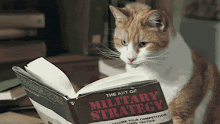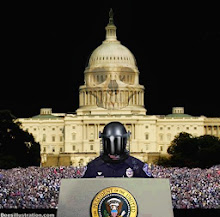
It turns out that there is a similar pattern of neural activity each time we become conscious of the same picture, but not if we process information from the image unconsciously. These contrasting patterns of activity can now be detected via brain scans, and could one day help determine if patients with brain damage are conscious. They might even be used to probe consciousness in animals.
"It's very exciting work," says neuroscientist Raphaël Gaillard of the University of Cambridge, who was not involved in the work. "The use of a reproducibility measure to disentangle conscious and non-conscious processes is genuinely new." Gaillard has previously shown that coordinated activity across the entire brain is one of the signatures of consciousness .
Consistent signals
So far, efforts to find a brain signature of consciousness have focused on the intensity of neural activity, how long it lasts, and whether signals tend to be synchronised across different regions of the brain.
"We were looking for something other than the intensity and duration of the neural activity that characterises conscious neural processing," says Aaron Schurger of Princeton University in New Jersey, who led the new work.
He and his colleagues hypothesised that when the brain is presented with the same sensory input – a picture, say – time after time, then conscious awareness of the picture should produce similar neural activity each time.
Conversely, if the sensory input did not enter conscious awareness, it should produce different brain activity each time because there would be other subconscious processes going on at the same time.
Invisible pictures
To test this hypothesis, Schurger and colleagues used functional magnetic resonance imaging (fMRI) to measure the brain activity in 12 volunteers who were asked to look at a series of images – some designed to elicit a conscious response, others a subconscious one.
The researchers invoked conscious processing simply by showing volunteers pictures of faces or houses. To invoke subconscious processing, the researchers presented volunteers with so-called "invisible stimuli".
These consist of two drawings, of either a house or a face, one shown to each eye. Crucially in each pair, one drawing is in pale orange on a pale green background, the other is the same drawing with the colours reversed. When the brain is confronted with such seemingly contradictory visual inputs it reconciles them by creating a yellow patch. So the volunteer consciously sees nothing but yellow, though the brain has subconsciously processed the face or house.
Probing anaesthesia
A set of fMRI recordings of subjects' temporal lobes backed up the team's hypothesis: each time a house or face was consciously processed by an individual, the resulting patterns in brain activity were similar. When the same image was processed subconsciously, the researchers found that the patterns of brain activity were much more variable. "Neural patterns were more reproducible when the drawings were seen consciously compared to when they were not," says Schurger.
The team thinks that reproducibility – the replication of similar neural patterns in the brain each time it becomes conscious of the same sensory input – gives us clues as to what consciousness is.
It could also be used in the future to tell if someone in a coma is conscious, or probe the consciousness of people under anaesthesia, something that also isn't well understood.
Article from: NewScientist.com
Image credit: HealthyJockey.com
Eldon Taylor - Subliminal Programming, Media Persuasion & Mind Control
Eldon Taylor - Mind Programming & How to Break Free from the Spell (Subscription)
Peter Russell - The Primacy of Consciousness
Peter Russell - Awareness, Presence & The Global Brain (Subscription)
Neil Kramer - Awakening, Eschatology & Entheogens
Neil Kramer - The Gates of Awakening & The Field Uplink
Steve Willner - Labyrinth of the Psychonaut
Michael Sharp - A Strong Theory of Consciousness and Creation
Michael Sharp - Consciousness & The Ascension Process
Doctors missing consciousness in vegetative patients
'Consciousness signature' discovered spanning the brain
'Consciousness meter' may predict coma recoveries
Systems Thinking: Ancient Maya’s Evolution of Consciousness and Contemporary
Toward a Science of Consciousness Conference 2009
Teenager who fell unconscious in bath is saved by twin sister's 'sixth sense'
A cyberpunk's search for consciousness
Neuroweapons, war crimes and the preconscious brain
Emotions Can Be Unconsciously And Subliminally Evoked, Study Shows
Forces of the Unconscious Mind
Transcendent Consciousness for Transcendent Technologies
The War on Consciousness
Red Ice Creations - Consciousness, OBE, RV, NDE, Entheogens and Altered States
What is Consciousness?
The Global Brain - Video
My Mystical Big Toe, A Strong Theory of Consciousness and Creation (pdf)





































No comments:
Post a Comment